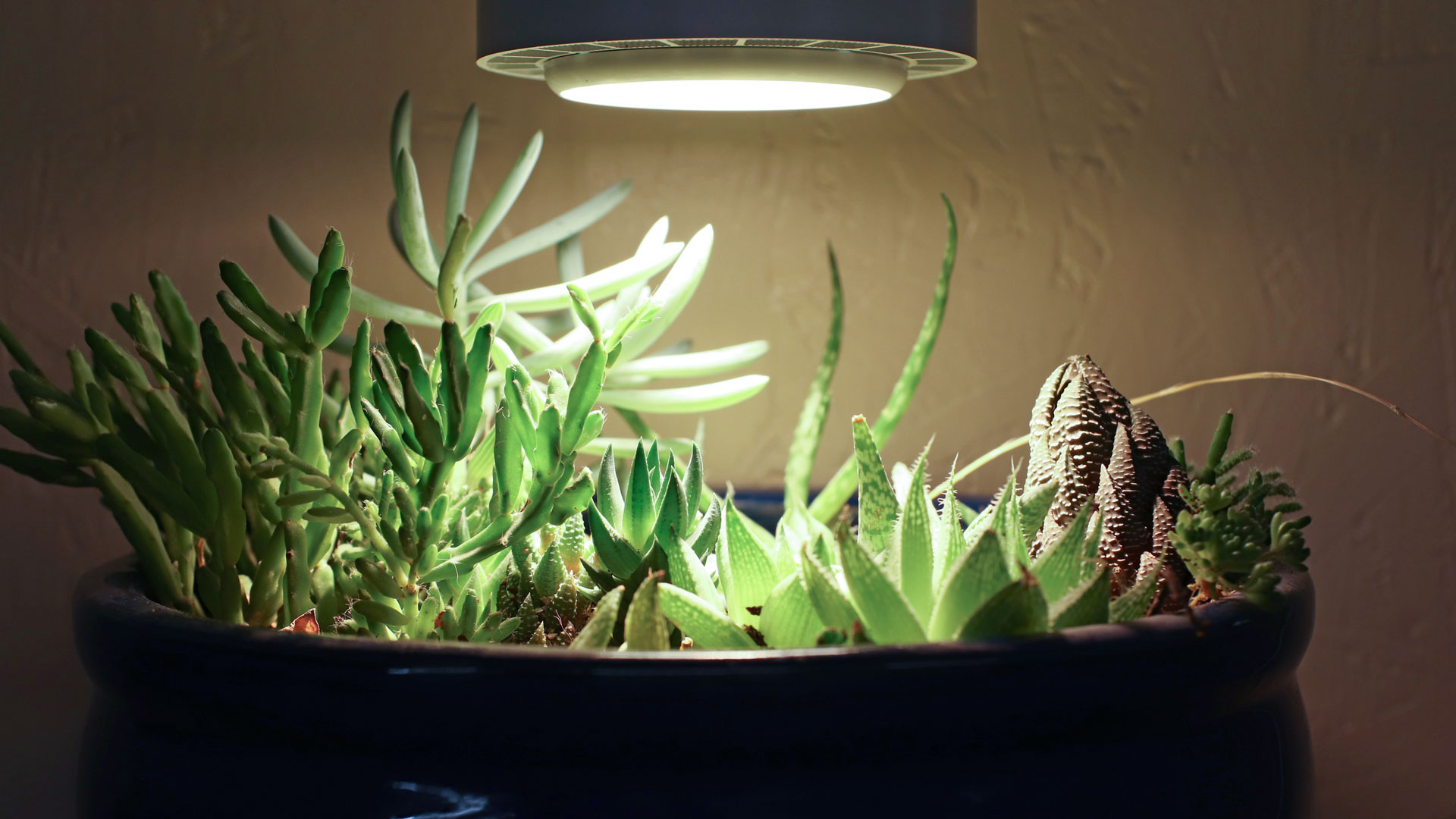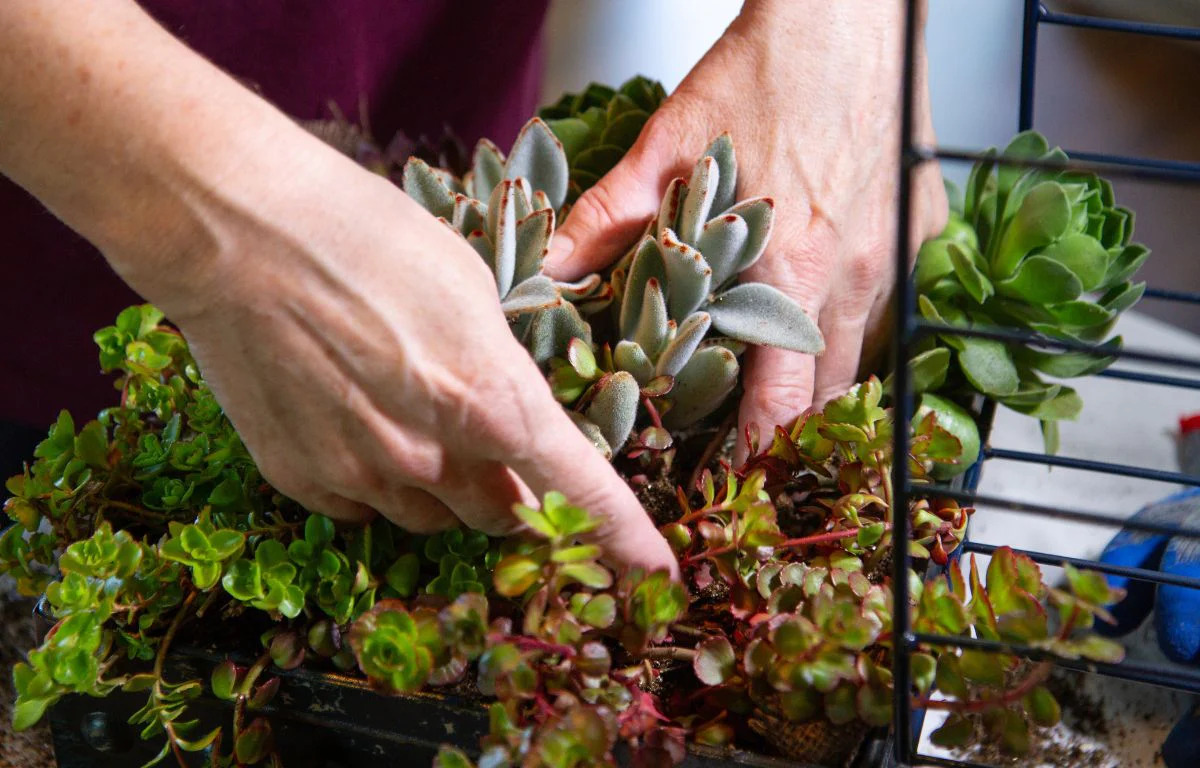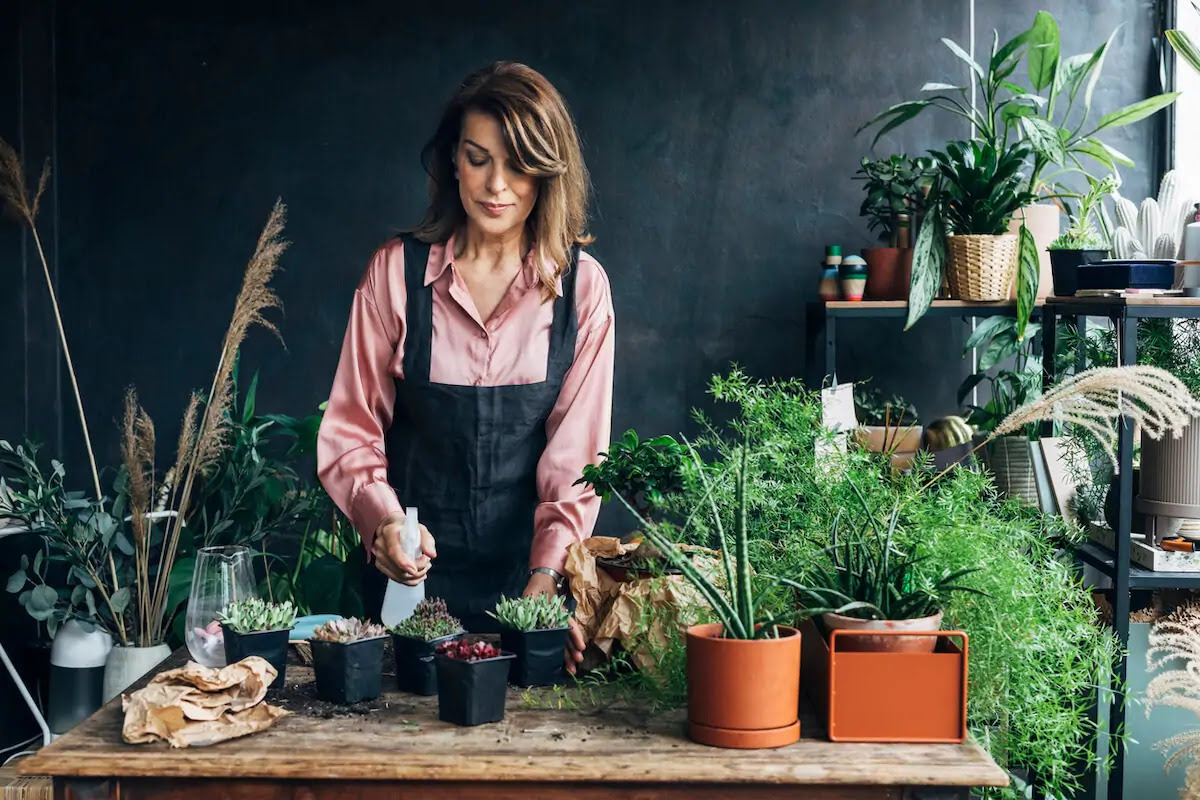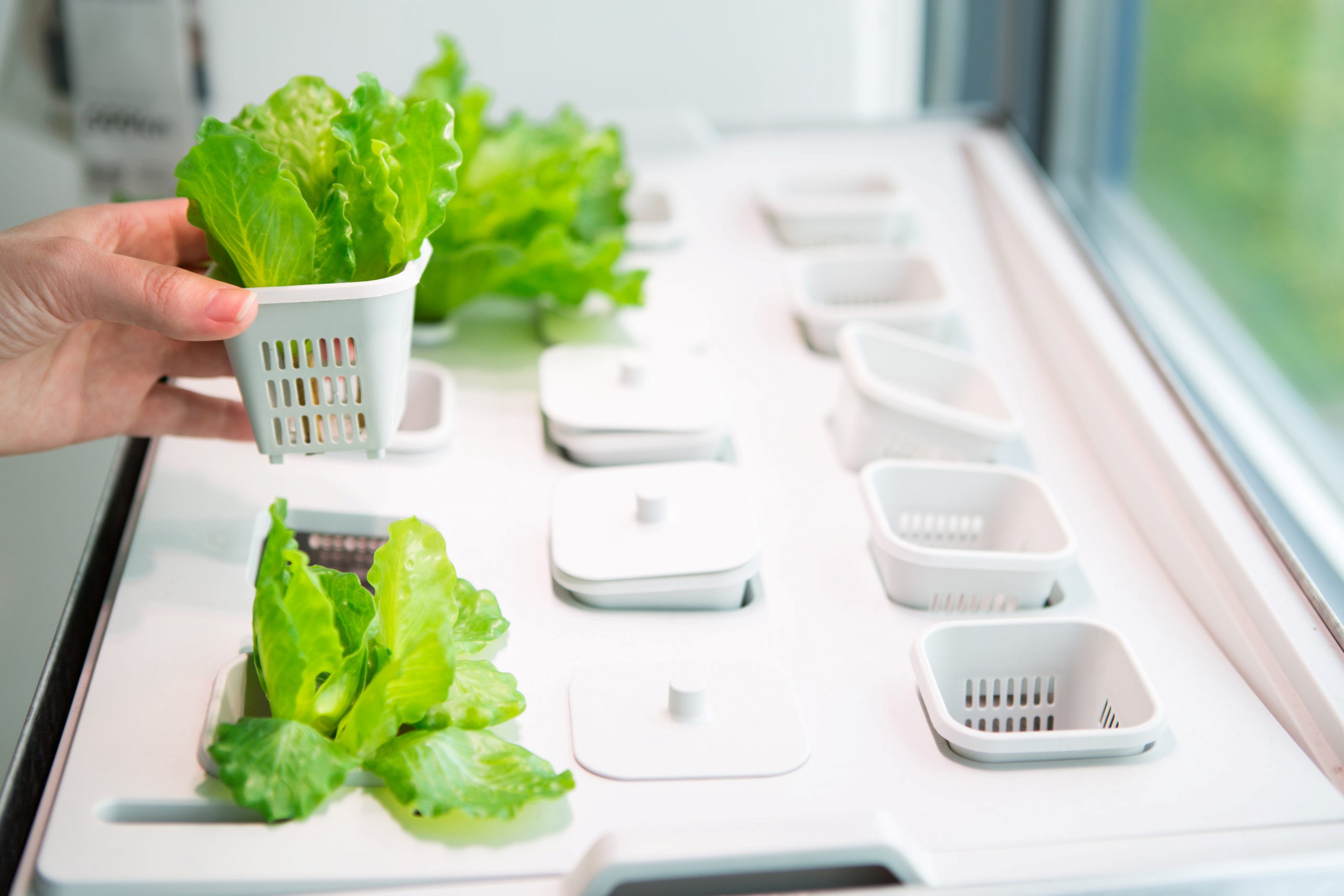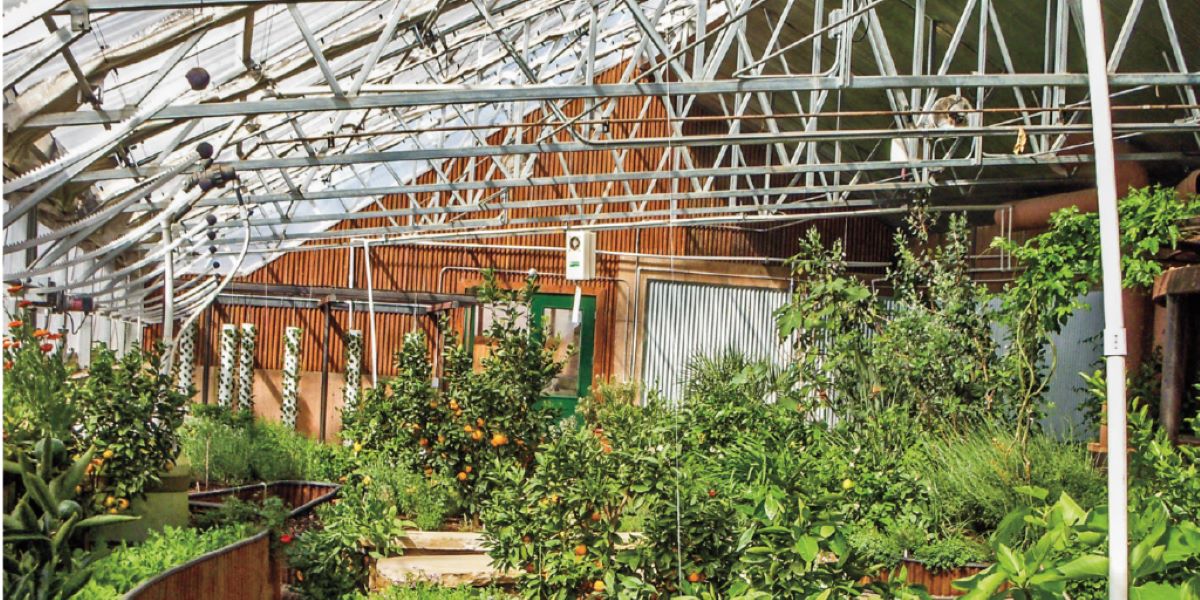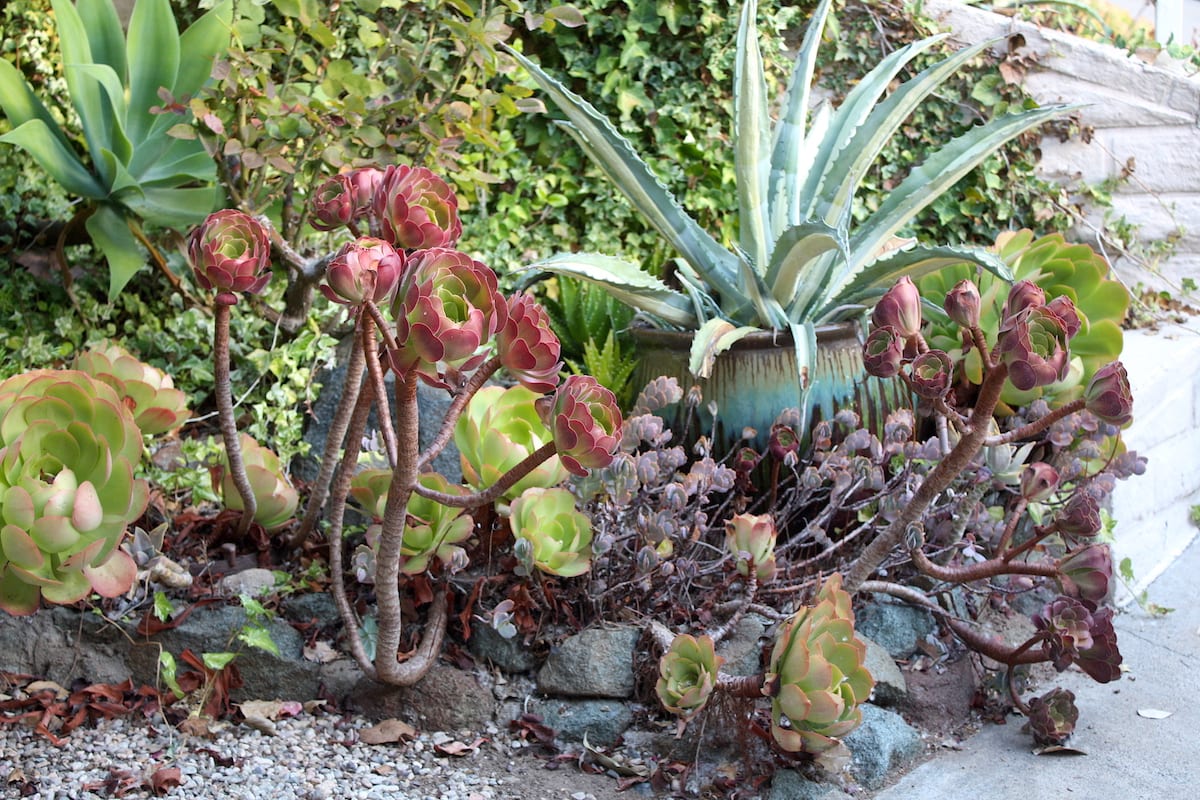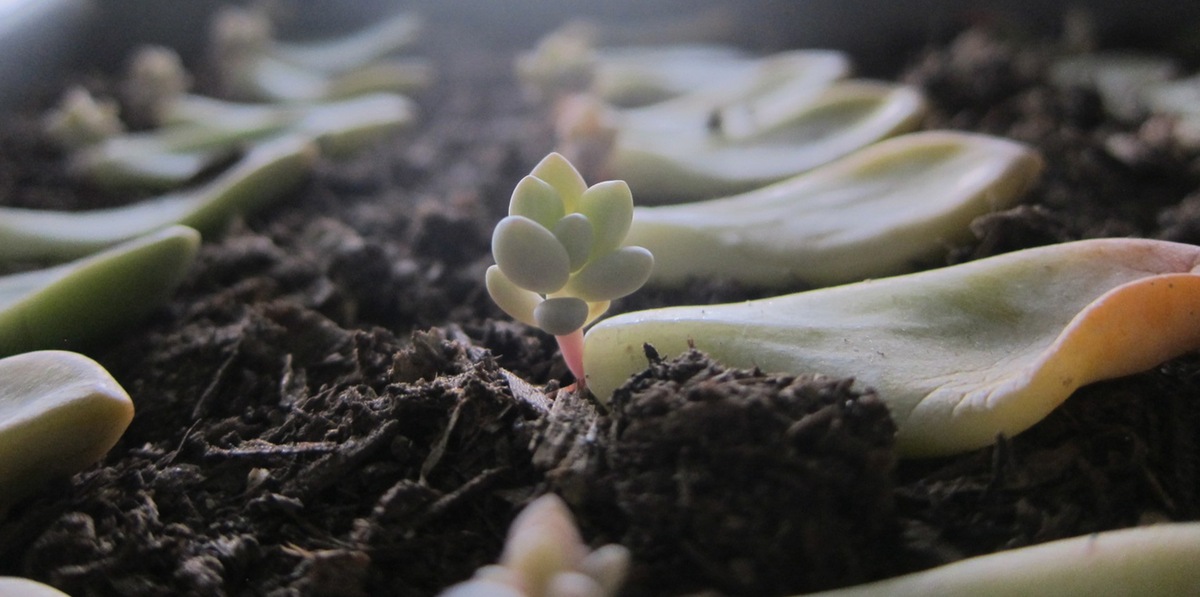Home>Types of Gardening>Ornamental Gardening>What Size Pot Do Succulents Need


Ornamental Gardening
What Size Pot Do Succulents Need
Modified: February 9, 2024
Discover the perfect size pot for your succulents with our ornamental gardening guide. Expert tips and advice for successful succulent care.
(Many of the links in this article redirect to a specific reviewed product. Your purchase of these products through affiliate links helps to generate commission for Chicagolandgardening.com, at no extra cost. Learn more)
Table of Contents
- Introduction
- Understanding the Needs of Succulent Plants
- Factors to Consider When Choosing a Pot Size for Succulents
- The Importance of Proper Drainage for Succulent Pots
- Choosing the Right Pot Material for Succulents
- Common Pot Sizes for Different Types of Succulents
- Tips for Repotting Succulents into the Correct Pot Size
- Maintaining Healthy Succulents in Appropriately Sized Pots
- Conclusion
Introduction
Welcome to the fascinating world of succulents! These unique and resilient plants have captured the hearts of many gardening enthusiasts, both beginners and experienced alike. One important aspect of caring for succulents is understanding their needs, including the right pot size to promote healthy growth and overall well-being.
Succulents are known for their ability to store water in their fleshy leaves and stems, allowing them to survive in dry and arid environments. This adaptive feature makes them popular indoor plants, as they require minimal watering and are relatively easy to care for.
However, the pot size plays a crucial role in the overall health and growth of succulents. Choosing the right size pot not only provides enough space for roots to spread out but also ensures proper drainage, preventing the risk of root rot. In this article, we will delve into the factors to consider when selecting a pot size for your succulents, the importance of proper drainage, and the common pot sizes recommended for different types of succulents.
Whether you are a seasoned gardener or just starting your succulent journey, understanding the significance of pot size is key to maintaining healthy and thriving succulent plants. So, let’s dive in and explore the world of succulent pot sizes!
Understanding the Needs of Succulent Plants
Before delving into the specifics of pot size, it is essential to understand the unique needs of succulent plants. Succulents have evolved to thrive in arid environments, where they can withstand long periods of drought by storing water in their leaves, stems, and roots. This adaptation allows them to survive in conditions where other plants would struggle.
Succulents require well-draining soil to prevent waterlogged roots, as excess moisture can quickly lead to root rot and the eventual demise of the plant. The ability to store water also means that succulents can tolerate longer periods between watering compared to other houseplants.
Another important aspect of succulent care is providing them with ample sunlight. Most succulents require bright, indirect light to thrive. Placing them near a south or west-facing window ensures they receive the necessary sunlight for their growth and vibrant foliage.
Furthermore, succulents prefer warm temperatures ranging from 60 to 80°F (15-27°C). They can tolerate slightly cooler temperatures but should be protected from freezing conditions, as prolonged exposure to cold temperatures can damage the plant.
Understanding these basic needs is essential to provide the optimal growing conditions for your succulent plants. Now, let’s explore how pot size affects their overall health and well-being.
Factors to Consider When Choosing a Pot Size for Succulents
Choosing the right pot size for your succulents is crucial for their overall health and growth. Here are some key factors to consider when selecting a pot size:
- Root Space: Succulents have shallow root systems that spread out rather than deep. It’s important to choose a pot that allows enough room for their roots to grow and expand without being overly spacious.
- Growth Potential: Consider the growth potential of the succulent when selecting a pot size. Some succulent varieties tend to grow taller, while others spread horizontally. Understanding the growth habit of your particular succulent will help you choose a pot that accommodates their future size.
- Watering Frequency: The pot size can impact the watering frequency for succulents. Smaller pots will dry out faster, requiring more frequent watering, while larger pots hold moisture longer. Consider your watering schedule and the time you can dedicate to plant care when selecting a pot size.
- Aesthetics: Pot size can also affect the overall aesthetic appeal of your succulent arrangement. Depending on your design preferences, you may choose pots that are slightly bigger or smaller to achieve the desired visual impact.
It’s important to strike a balance between providing adequate root space and avoiding pots that are excessively large, as this can lead to water retention and potential root rot. Now that we have explored the factors to consider, let’s discuss the crucial aspect of proper drainage in succulent pots.
The Importance of Proper Drainage for Succulent Pots
Proper drainage is of utmost importance when it comes to succulent pots. Succulents are highly susceptible to root rot, a fungal condition caused by excessive moisture around the roots. Without proper drainage, water can accumulate in the pot, leading to the slow demise of your beloved succulents.
Succulents require well-draining soil that allows any excess water to flow out of the pot. This prevents the roots from sitting in water, which can cause them to rot. The roots of succulents are adapted to be efficient at taking in water and nutrients when available but also withstand drought periods. Thus, maintaining proper drainage is essential to mimic their natural environment.
When selecting a pot for your succulents, make sure it has drainage holes at the bottom. These holes allow excess water to escape, preventing waterlogged soil and promoting healthy root growth. Without adequate drainage, water will accumulate at the bottom of the pot and drown the roots, leading to severe damage or death of your succulents.
Additionally, using a well-draining soil mix specifically designed for succulents is crucial for optimal drainage. These mixes often include ingredients such as perlite, sand, or coarse compost to improve drainage and prevent water retention.
Remember that even with proper drainage, it’s essential to be mindful of your watering habits. Allow the soil to dry out completely between waterings to prevent overwatering. Remember, too much water is far more detrimental to succulents than too little.
Now that we understand the importance of proper drainage, let’s explore the different pot materials best suited for succulents.
Choosing the Right Pot Material for Succulents
When it comes to selecting the right pot material for your succulents, there are a few options to consider. Each pot material has its advantages and considerations, so let’s explore them below:
- Terra Cotta: Terra cotta pots are a popular choice for succulent enthusiasts. They are made from clay and are known for their porous nature, allowing air and water movement through the pot walls. This material promotes breathability and helps prevent overwatering. However, terra cotta pots can dry out quickly, so they may require more frequent watering in hot and dry climates.
- Ceramic: Ceramic pots are both functional and aesthetically pleasing, as they come in a variety of colors and designs. They generally have a smoother surface compared to terra cotta, which reduces evaporation. Ceramic pots can retain moisture for longer periods, making them suitable for succulents that prefer slightly moister soil conditions. However, it’s crucial to ensure proper drainage holes are in place to avoid waterlogging.
- Plastic: Plastic pots are lightweight and durable, making them a practical choice for succulent gardening. They are less porous than clay pots, which means they retain moisture longer. Plastic pots often come with pre-drilled drainage holes and are less likely to break. However, it’s essential to monitor watering habits carefully, as succulents can be more prone to root rot in plastic pots if overwatered.
- Glass or Decorative Containers: While glass or decorative containers can add a touch of elegance to your succulent display, it’s important to proceed with caution. These containers often lack drainage holes, making them unsuitable for direct planting. Instead, consider using them as outer decorative pots and place your succulents in separate, well-draining pots within the decorative container. This method ensures proper drainage and prevents water from accumulating around the roots.
When choosing a pot material for your succulents, consider factors such as your local climate, watering habits, and the specific needs of your succulent varieties. Regardless of the pot material you choose, ensure proper drainage and use a well-draining soil mix to provide your succulents with the best growing conditions.
Now that we’ve covered pot materials, let’s delve into the different pot sizes recommended for various types of succulents.
Common Pot Sizes for Different Types of Succulents
Choosing the right pot size for your succulents is essential for their optimal growth and health. While the specific pot size may vary depending on the individual succulent’s size and growth habit, here are some general recommendations:
- 2-inch Pot: This small pot size is ideal for propagating succulents or newly rooted cuttings. It provides just enough space for the young plant to establish its roots.
- 4-inch Pot: The 4-inch pot is suitable for small succulents or slow-growing varieties. It offers enough room for the plant’s root system to spread comfortably while preventing excessive moisture retention.
- 6-inch Pot: The 6-inch pot is a popular choice for medium-sized succulents or those that show moderate growth. It provides ample space for root growth and accommodates the plant’s size without overwhelming it.
- 8-inch Pot: The 8-inch pot is suitable for larger succulents or those that have a bushy growth habit. It allows the plant to spread out its roots and provides stability for taller or top-heavy varieties.
- 10-inch Pot or Larger: For larger succulents or those that have extensive root systems, a 10-inch pot or larger is recommended. These pots accommodate the plant’s size and allow for healthy root development.
Remember that these are general guidelines, and individual succulents may have specific requirements based on their growth patterns and root development. It is always best to assess the size and needs of your succulent when selecting the pot size.
Additionally, consider the overall arrangement and design of your succulent display. Grouping multiple succulents of similar size together in a larger pot can create a visually pleasing composition.
Now that we know about the common pot sizes, let’s move on to the next section, where we will explore tips for repotting succulents into the correct pot size.
Tips for Repotting Succulents into the Correct Pot Size
Repotting your succulents into the correct pot size is an important step in their care routine. Here are some helpful tips to ensure a successful repotting process:
- Assess the Root System: Before repotting, carefully examine the root system of your succulent. If you notice roots circling around the pot or growing densely, it’s time to repot into a larger pot. For succulents with sparse or underdeveloped roots, a smaller pot size may be more appropriate.
- Choose the Right Pot: Select a pot that is slightly larger than the current pot, allowing room for root growth. Ensure the new pot has drainage holes to prevent water accumulation.
- Prepare the Soil: Use a well-draining soil mix specifically formulated for succulents. Avoid using regular potting soil, as it tends to retain too much moisture, which can lead to root rot. Consider adding perlite or coarse sand to the mix to improve drainage.
- Gently Remove the Succulent: Carefully remove the succulent from its current pot by gently loosening the soil and easing the plant out. Be cautious not to damage the roots during the process.
- Inspect and Prune: Take this opportunity to inspect the roots for any signs of damage, disease, or pest infestation. Trim off any unhealthy or rotting roots using clean and sterilized scissors or pruning shears.
- Place in New Pot: Position the succulent in the center of the new pot, ensuring that it sits at the same depth as before. Add the prepared soil mix around the roots, gently pressing it down to secure the plant in place.
- Allow for Adjustment: After repotting, give your succulent some time to adjust to its new pot and environment. Avoid watering for a week or two to allow the roots to settle and prevent overwatering issues.
- Resume Normal Care: Once the succulent has had time to adjust, resume your regular care routine. Provide adequate sunlight, water sparingly, and monitor the plant’s overall health and growth.
Remember, repotting should be done when necessary, such as when the current pot becomes too small or if you notice signs of root congestion. Be cautious not to repot too frequently, as succulents prefer to be slightly root-bound.
Now that we have covered the tips for repotting, let’s move on to the final section, where we will discuss how to maintain healthy succulents in appropriately sized pots.
Maintaining Healthy Succulents in Appropriately Sized Pots
Once you have successfully repotted your succulents into the appropriate pot size, it’s important to continue providing the necessary care to keep them healthy and thriving. Here are some tips on maintaining healthy succulents in appropriately sized pots:
- Watering: Succulents prefer infrequent but deep watering. Allow the soil to dry out completely between waterings, and then water thoroughly until water drains from the bottom of the pot. Avoid overwatering, as succulents are prone to root rot.
- Sunlight: Place your succulents in a bright location with indirect sunlight. Most succulents require at least 6 hours of bright light per day. Monitor your plants for signs of sunburn, such as brown or bleached leaves, and adjust their sun exposure accordingly.
- Temperature: Succulents thrive in warm temperature ranges between 60 to 80°F (15-27°C). Protect them from extreme temperature fluctuations and frost, as this can damage the plant. A well-ventilated indoor space or a protected outdoor area is ideal.
- Fertilizing: Succulents have low nutritional requirements. Feed them with a balanced, diluted fertilizer during the growing season (usually spring and summer) to provide essential nutrients. Avoid overfertilizing, as this can lead to burnt foliage or excessive growth.
- Pruning: Regularly check your succulents for any dead or dried leaves and trim them off using clean sharp scissors or pruning shears. This not only keeps the plant tidy but also prevents potential disease or pest issues.
- Monitoring: Keep an eye on your succulents for any signs of pests, such as mealybugs or scale insects. Treat any infestations promptly using appropriate organic pest control methods to prevent damage to your plants.
- Periodic Repotting: As your succulents grow, they may eventually outgrow their pots. Periodic repotting, when necessary, into a slightly larger pot will provide the necessary space for their roots to expand. This will help prevent rootbound conditions and promote healthy growth.
Remember, each succulent is unique, and their care requirements may vary. Observe your plants closely and make adjustments to their care routine as needed. With proper care and attention, your succulents will continue to thrive and bring joy to your living space.
Now that we have covered the essentials of maintaining healthy succulents in appropriately sized pots, you are well-equipped to provide ideal care for your succulent garden.
Conclusion
Caring for succulents is an enjoyable and rewarding hobby that allows you to create stunning displays of these resilient and unique plants. Choosing the right pot size for your succulents is crucial for their overall health and growth. It ensures proper root development, prevents overwatering, and promotes optimal drainage.
Understanding the needs of succulents, such as their preference for well-draining soil, bright sunlight, and infrequent watering, will guide you in selecting the appropriate pot size. Factors like root space, growth potential, watering frequency, and aesthetics should be considered when choosing a pot for your succulents.
Proper drainage is essential to prevent root rot, a common issue for succulents. Select pots with drainage holes and use a well-draining soil mix to promote healthy root growth and prevent waterlogged soil.
When repotting succulents, assess the root system, choose a pot that allows room for growth, and handle the plant with care. Maintain a regular care routine by providing adequate sunlight, avoiding overwatering, monitoring temperature conditions, and practicing occasional pruning and fertilizing.
By following these guidelines, you will create an optimal environment for your succulents, ensuring their long-term health and vibrancy. Embrace the beauty and diversity of succulent plants, and enjoy the wonders of ornamental gardening.
